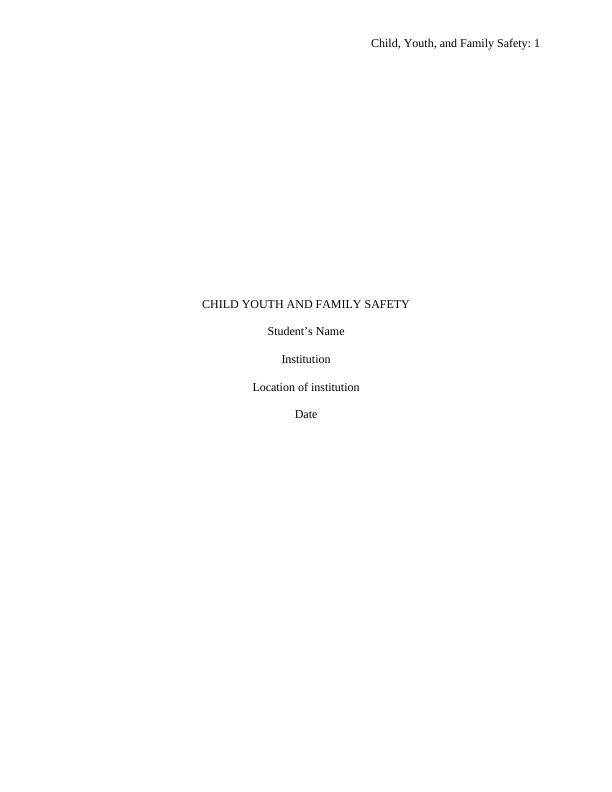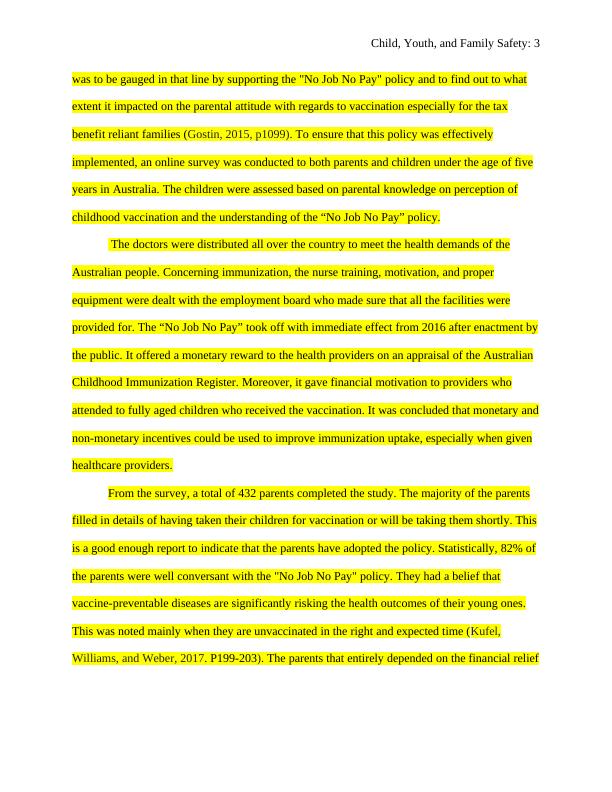Child, Youth and Family Safety Research 2022
Review and appraise the topic of immunization, discuss health policies, apply principles of health promotion and primary health care, discuss advocacy, and apply principles of equity, rights, and access applicable to Aboriginal and Torres Strait Islander families.
9 Pages2698 Words28 Views
Added on 2022-09-30
Child, Youth and Family Safety Research 2022
Review and appraise the topic of immunization, discuss health policies, apply principles of health promotion and primary health care, discuss advocacy, and apply principles of equity, rights, and access applicable to Aboriginal and Torres Strait Islander families.
Added on 2022-09-30
ShareRelated Documents
End of preview
Want to access all the pages? Upload your documents or become a member.
Childhood Immunization: Health Policies, Promotion, Advocacy and Equity in Australia
|11
|2623
|372
Compulsory Childhood Vaccinations
|4
|813
|476
Contemporary Challenges regarding Informed Consent (Doc)
|22
|5419
|63
Immunization against Whooping Cough and Measles in Australian Children
|6
|1527
|95
Health Care Management | Assessment
|5
|837
|15
Health across the Lifespan | Ethics in Healthcare | Case Study
|11
|2873
|18



